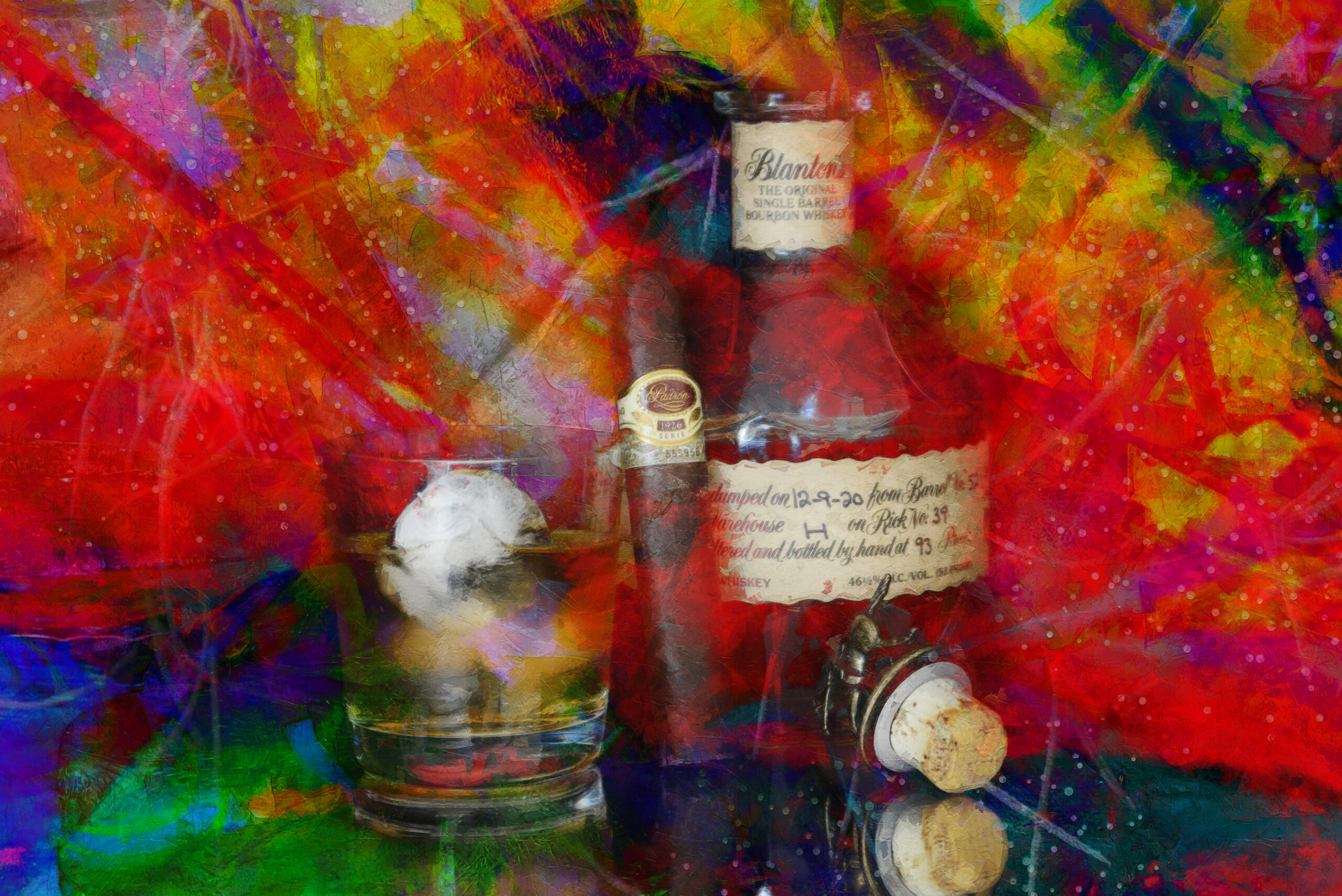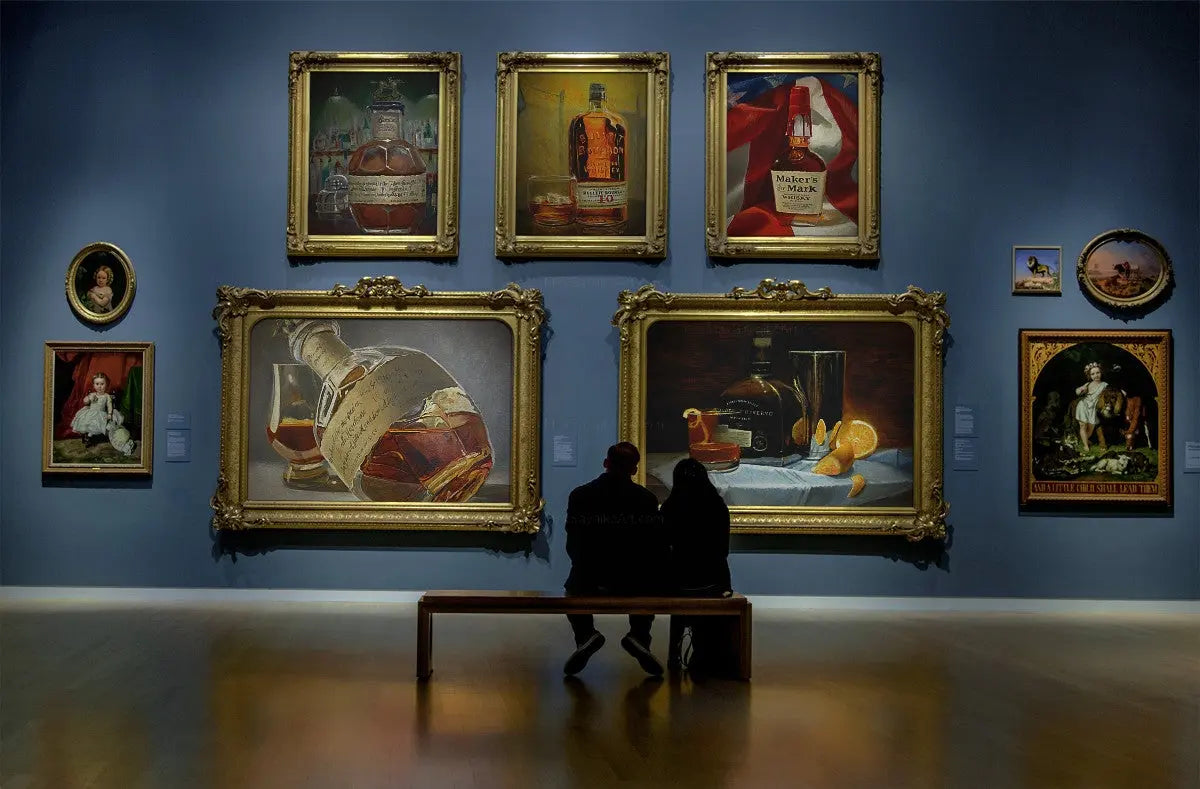Whiskey Art: Capturing the Essence of Distillation in Every Brushstroke
Whiskey Art: Capturing the Essence of Distillation in Every Brushstroke
Blog Article
Recording the Essence of Scotch Art With One-of-a-kind Aesthetic Representations and Styles
The art of scotch extends beyond the liquid itself, manifesting with a selection of aesthetic depictions that envelop its fabled heritage and craftsmanship. What stays to be uncovered is just how these progressing styles mirror not just the whiskey itself but also the transforming landscape of creative interpretation. Whiskey Art.
The Background of Scotch Art

As scotch production spread, so too did the need to raise its experience with art. From the detailed inscriptions on very early casks to the sophisticated tags of modern-day containers, each component reflects an unique artistic vision, acting as a visual story of the bourbon's heritage.
In the 18th and 19th centuries, the increase of the industrial revolution further boosted bourbon art, leading to innovative product packaging and advertising and marketing that captured consumer focus. Developers and musicians began trying out aesthetics, imbuing whiskey-related images with symbolic definitions that communicated ideas of community, workmanship, and practice.
Today, scotch art continues to evolve, blending standard methods with contemporary art types. Realism Art. This recurring dialogue between the spirit and its visual representation underscores the enduring bond between scotch and culture, enhancing the general experience for fanatics worldwide
Iconic Container Designs
While numerous variables contribute to the allure of scotch, famous container styles play a crucial duty fit customer assumption and boosting the overall experience. The aesthetic discussion of bourbon containers is not just a visual consideration; it functions as a bridge between the customer and the product, evoking feelings and setting expectations.
Distinctive shapes, products, and closures can elevate a bourbon brand's identification, making it instantaneously well-known on congested shelves. For instance, the classic Glenfiddich container, with its classy conical silhouette, communicates a sense of custom and craftsmanship, while the bold, modern style of the Balvenie bottle shows technology and class. In addition, making use of tinted glass or special textures can recommend the quality and personality of the whiskey within.
Legendary styles typically integrate elements of social heritage, representing the brand name's history and connection to its origins. Brands like Jack Daniel's utilize a straightforward, durable layout that reverberates with its American whiskey heritage. Ultimately, the influence of bottle layout prolongs past mere performance; it envelops the significance of the brand, inviting consumers to discover and indulge in the abundant tapestry of bourbon society.
Label Artwork and Branding
Bottle layouts often establish the phase of what consumers can anticipate, yet tag artwork and branding play an equally significant role in communicating a scotch's identity. The tag serves as the initial factor of get in touch with in between the customer and the product, encapsulating the significance of the scotch within its visual components.
Efficient label art work integrates color, typography, and images to produce a story that resonates with the brand's heritage and target market. As an example, a label featuring vintage fonts and detailed images may stimulate a feeling of custom and workmanship, attracting connoisseurs. On the other hand, vibrant colors and contemporary layout aspects could attract a younger group seeking innovation and enjoyment.


Photography and Visual Narration
Catching the significance of scotch through digital photography and aesthetic storytelling is an art kind that raises the brand experience. This medium transcends mere item depiction, delving into the intricate stories that border each bottle. By using compelling images, digital photographers can stimulate feelings that reverberate with consumers, eventually building a much deeper connection to the bourbon brand name.
Aesthetic storytelling in scotch photography frequently utilizes abundant structures, lighting, and structure to highlight the special features of the spirit. The interplay of light and darkness can emphasize the brownish-yellow shades of scotch, while the selection of history components-- such as rustic barrels or stylish glasses-- can strengthen the brand name's heritage or lifestyle associations.
Additionally, recording the ceremonial aspects of whiskey intake, from the pouring to the sampling, Visit Your URL invites viewers right into a sensory experience, allowing them to envision the flavors and aromas that await. Each picture not only showcases the item however additionally tells a tale of craftsmanship, custom, and the moments that scotch can improve - Realism Art. Therefore, digital photography comes to be an effective device in articulating the identity of whiskey brand names, positioning them within the wider cultural landscape
Emerging Trends in Scotch Art
The advancement of whiskey art is increasingly shaped by contemporary patterns that show more comprehensive social changes and consumer choices. This change not just highlights the importance of sustainability but also enhances the story surrounding whiskey manufacturing.
Additionally, digital art has actually surged in appeal, permitting why not find out more cutting-edge depictions of bourbon. Artists are leveraging modern technology to craft immersive experiences, such as enhanced truth setups that involve viewers and offer a much deeper understanding of whiskey's cultural value. This trend likewise encompasses social media platforms, where aesthetically striking web content gathers attention and cultivates neighborhood amongst fanatics.
Furthermore, cooperations in between bourbon brands and artists are becoming more prevalent. These collaborations generate limited-edition product packaging styles and special artworks that celebrate both the craftsmanship of bourbon and the imagination of artists. As whiskey art remains to evolve, these emerging trends will unquestionably form its future, fostering a dynamic crossway of culture, sustainability, and modern technology within the scotch community.
Conclusion
To conclude, the art of bourbon encompasses a varied range of graphes that reflect its abundant heritage and craftsmanship. From iconic bottle styles and detailed label art work to compelling photography, each aspect contributes to a more comprehensive narrative that enhances the consumer's experience. As emerging trends, such as electronic art and sustainability, continue to form this imaginative landscape, the multifaceted identification of bourbon remains a sustaining source of cultural connection and exploration.

In conclusion, the art of bourbon includes a varied range of aesthetic representations that show its abundant heritage and workmanship.
Report this page